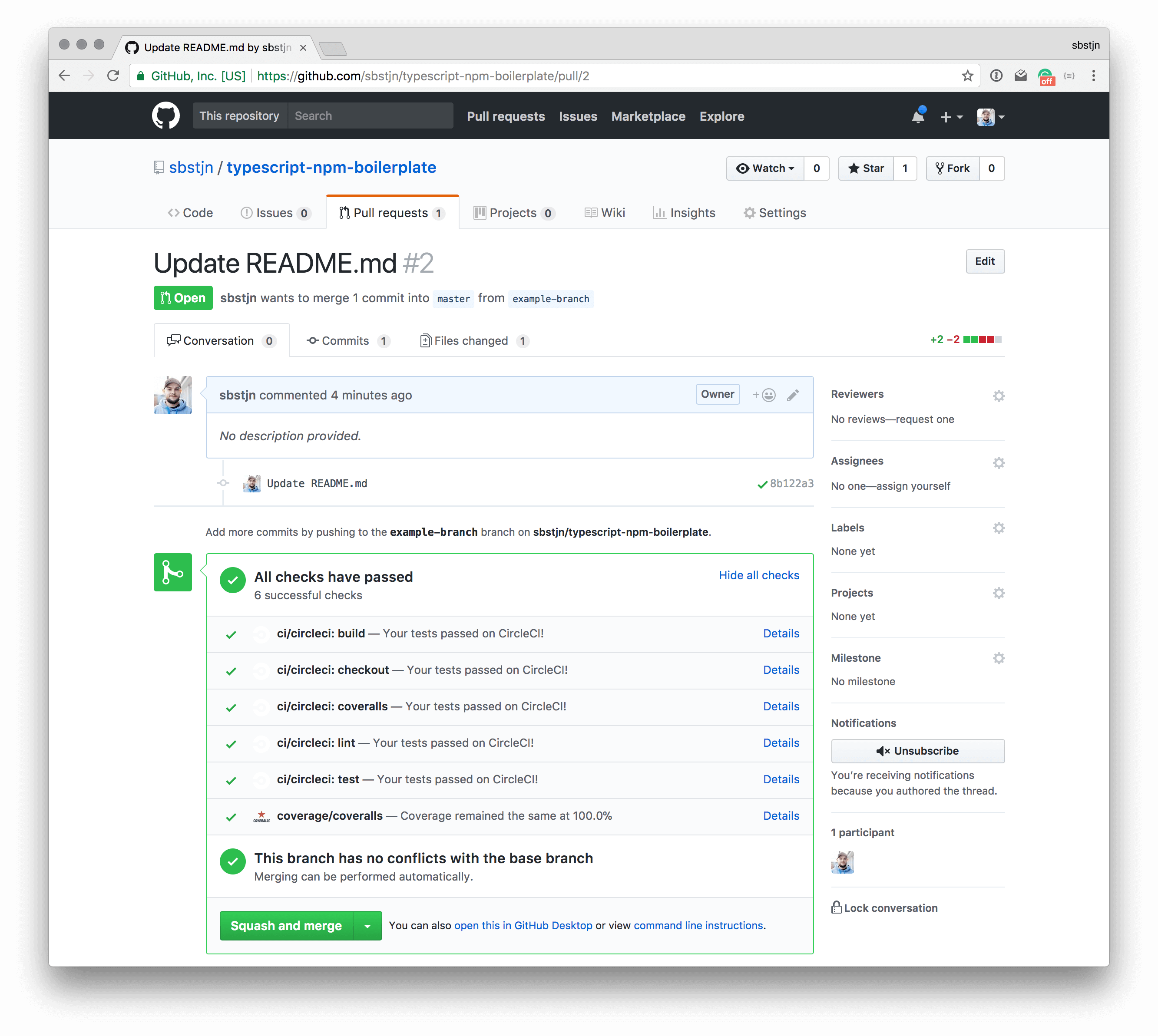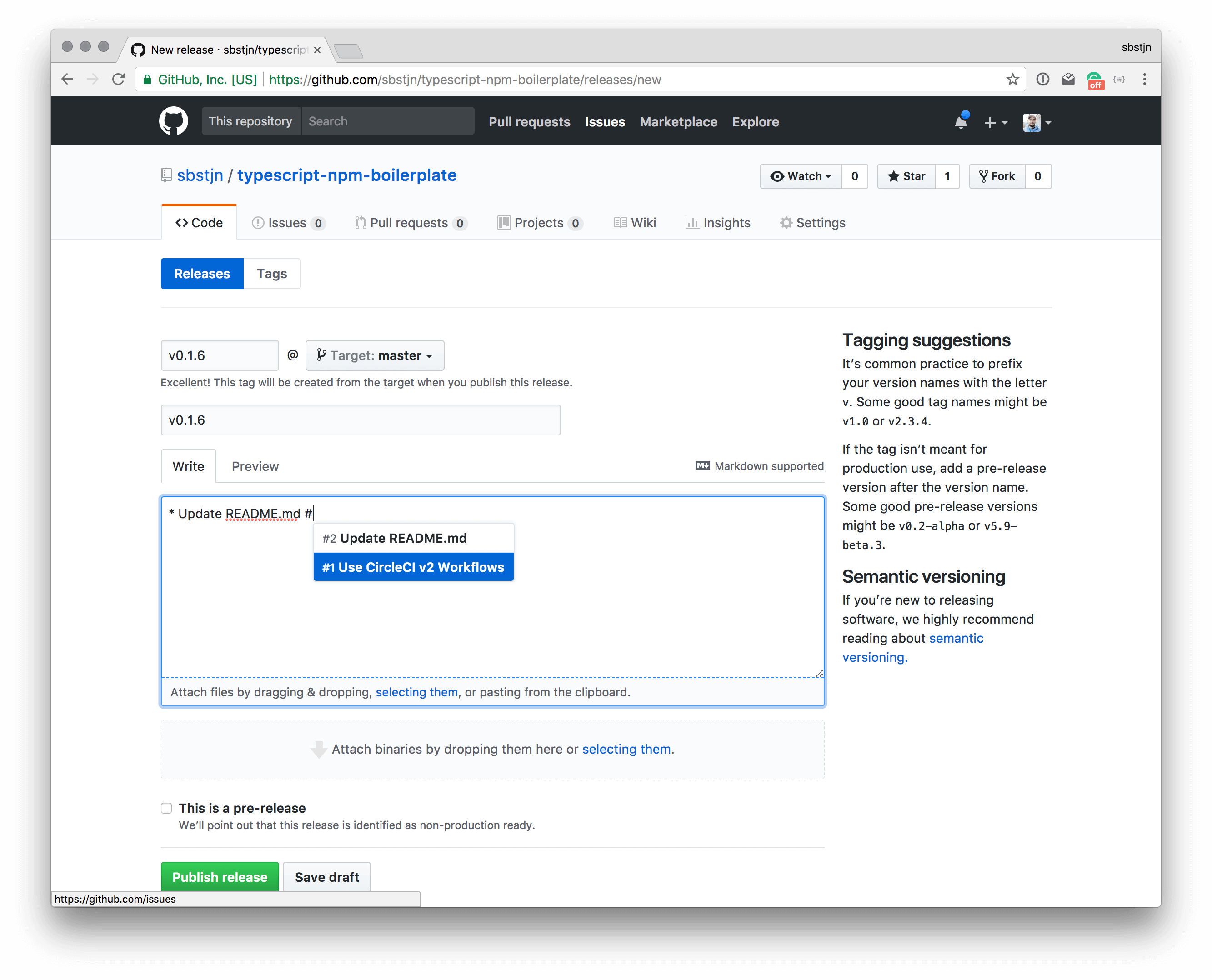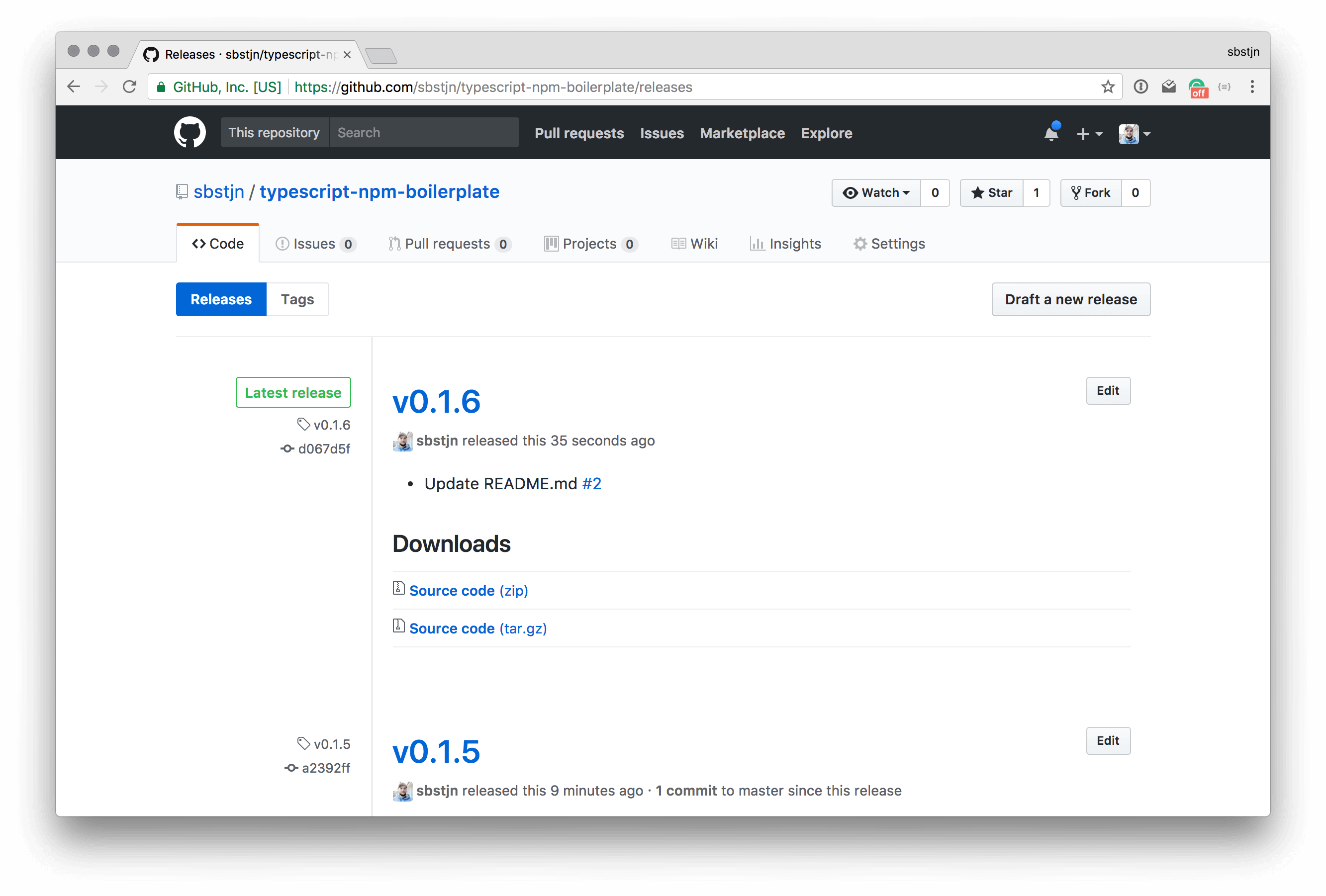If you love software workflows as much as I do, you should check out my basics for deploying NPM packages using TypeScript, CircleCI v2, and GitHub Releases.
You can find an example project on GitHub configured with all of following features. Use this guide as documentation for the project and make sure to check out the sources!
GitHub and The Basics
Just work with GitHub as you are used to: Work in branches, create Pull requests, ensure an always building master branch, and think about why you might be using git wrong.

CircleCI v2 Workflows
The recent major release v2 of CircleCI introduced new features for Jobs and Workflows. You can split up the build process of your projects into smaller jobs that can be organized in workflows.
Each step for the NPM package is separated in single jobs, so tasks for running the tests and linting the source files can be run in parallel.

With the basic GitHow flow, this works perfectly: Every commit on a branch and new Pull requests trigger the following NPM tasks:
lint - Check the sourcestest - Run all testsbuild - Ensure the project can be buildcoverage - Post coverage report to Coveralls.io
Per default lint and test are executed at the same time in parallel. After both tasks finished successfully, CircleCI triggers the jobs for build and coverage, in parallel of course.
Publish to NPM
On top of the basics for every branch and PullRequest, CircleCI is configured to run the deploy task for every GitHub Release after building the project was successful.

With this workflow, you will always have tests, linting, and compile checks for every branch and PR. You can manage your changelog with GitHub Releases and don’t have to care about how to publish your project to NPM.

Just configure CircleCI with your NPM token, and for every release a new NPM package with that version is published:

You can find all sources on GitHub, of course. Just clone the repository and start writing your NPM modules using TypeScript and say goodbye to plain JavaScript 👋 😘
-
November 8 th, 2017
182 Words
The YubiKey is a great OpenGPG smart card compatible hardware device. I use my YubiKey to store my private GnuPG key and for authenticating SSH connections. A few applications, however, don’t work with the OpenGPG card and require a file containing the key per default; Sequel Pro is one of them.
-
November 3 rd, 2017
172 Words
The MaxMind GeoLite2 database is basically the standard solution when you need to get the geo information for an IP address. Together with the mmdb-reader NPM package you can easily deploy your own serverless API to AWS Lambda to lookup locations for IP addresses.
-
August 23 rd, 2017
591 Words
AWS Lambda functions together with an Amazon Kinesis Stream offer a great way to process continuous information. I created an example project called Serverless Analytics to demonstrate this. You can use this as the starting point to create your very own Google Analytics clone and run it serverless and hopefully maintenance-free on Amazon.
-
July 19 th, 2017
151 Words
Since a few days, Amazon provides a native way to enable Auto Scaling for DynamoDB tables! Luckily the settings can be configured using CloudFormation templates, and so I wrote a plugin for serverless to easily configure Auto Scaling without having to write the whole CloudFormation configuration.
-
July 1 st, 2017
260 Words
When you use a serverless environment for your service (and you should!), chances are high you might be using the Serverless framework and may end up in a situation like me with the need to process the AWS CloudFormation Stack Output after deploying the service.
-
April 1 st, 2017
1071 Words
Have you ever wondered how to process messages from SQS without maintaining infrastructure? Amazon Web Services perfectly support SNS as a trigger for AWS Lambda functions, but with SQS you have to find a custom solution. This tutorial will show an experimental setup using Serverless to read messages from an SQS queue and build auto-scaling worker processes.
-
March 30 th, 2017
1667 Words
If you read my first article about Amazon Alexa and AWS Lambda, you already know how to deploy a custom Alexa skill using Apex. With this article, you will learn how to use the Serverless framework to deploy a function to AWS Lambda and invoke it with your Amazon Echo using voice commands.




